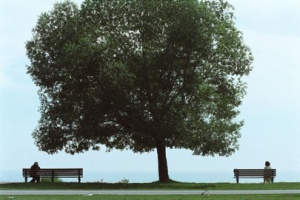Among the most popular questions that come up time and again are about trees on the boundary between houses or properties.
Who owns them? What are the rules about cutting branches or roots that extend onto your property? If you think a tree is dying, can you cut it down? If your neighbour’s tree falls onto your yard in a storm is it his responsibility to pay for the cleanup? Are there any protected trees in Ontario that cannot be trimmed?
Here are the answers:
Who owns the tree?
A tree whose trunk is on the boundary between properties belongs to both property owners, according to the Forestry Act of Ontario.
When you can trim
Either owner can trim branches on their side of the property. If the tree is completely on your neighbour’s land, but roots and branches extend onto your property, you have the right to trim them, so long as it does not do any harm to the tree.
You cannot go into your neighbour’s yard to do this. While this is usually simple to determine when it comes to branches, it is not so easy to figure out when roots are involved. In other words, how do you know whether cutting part of the roots on your land will injure the tree?
Here’s where it can be a problem: I have had clients who wanted to put in a pool, only to find that the neighbour’s tree roots extend into their yard. Do they have to move the pool or make it smaller? The rule of thumb is that the diameter of the tree trunk determines how far away from it you can dig. In Toronto, if the trunk is less than 30 centimetres, you can usually dig two metres from your neighbour’s tree trunk. If it’s more, then it is best to consult with a professional arborist before you start, especially since every city may have its own tree by-laws. You can find a certified arborist in your area at www.isaontario.com.
A dying tree
If you think a tree is dying and you get a report from a certified arborist, you can remove the tree from your yard, in most cases without a permit. Still, you need to send in a copy of the arborist’s report to the City before taking down the tree.
If a tree falls
If a tree falls and damages your property, it will largely depend on whether the tree was healthy or whether you had warned your neighbour to remove the tree because it was dying. Case law has determined that if the tree was healthy, then you cannot sue your neighbour for damages. It becomes a matter between you and your insurance company, although in my experience, many policies do not cover this type of damage. However, there is also case law that if you had warned your neighbour to take down the tree because it was dying, they did nothing and then damage occurred, you can successfully claim for your losses.
Protected trees
Most trees within 15 feet of the road are typically owned by the City, so you can’t cut any of the branches or remove the tree yourself. If you are worried that the branches may damage wires from the hydro poles, contact the City. They’ll come and trim the branches or remove the tree.
There are also rules against trimming or cutting down a heritage tree. You can find a listing of heritage trees at www.heritagetrees.on.ca.
Mark Weisleder is a real estate lawyer. You can contact Mark at mark@markweisleder.com.
Great article to read on a windy, windy day!

